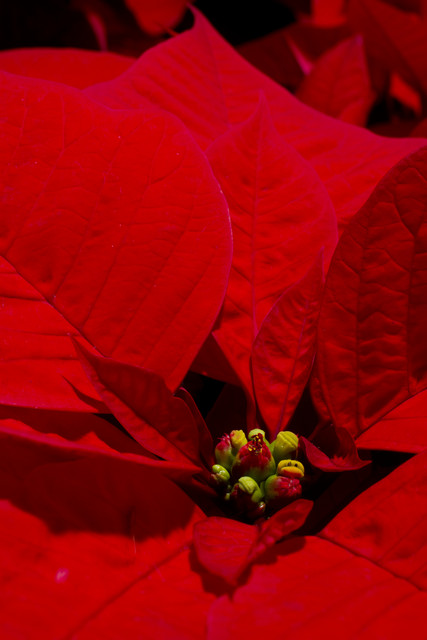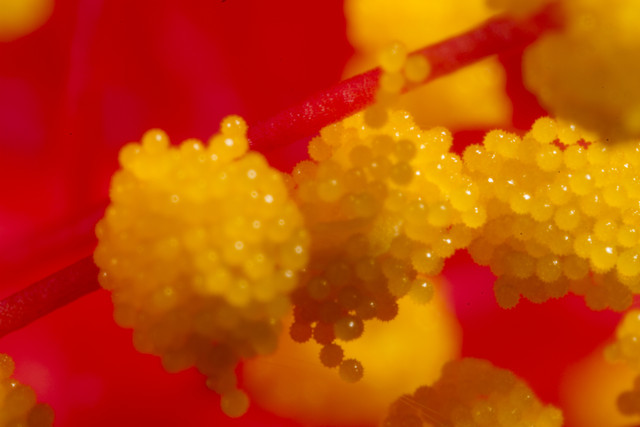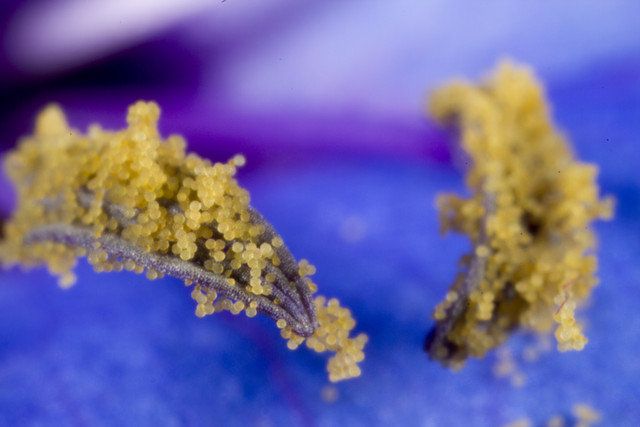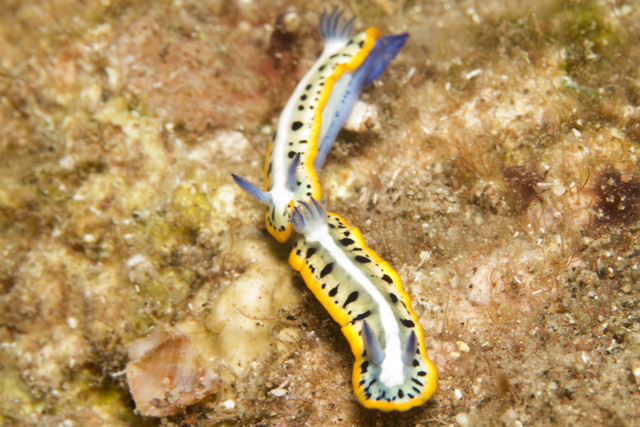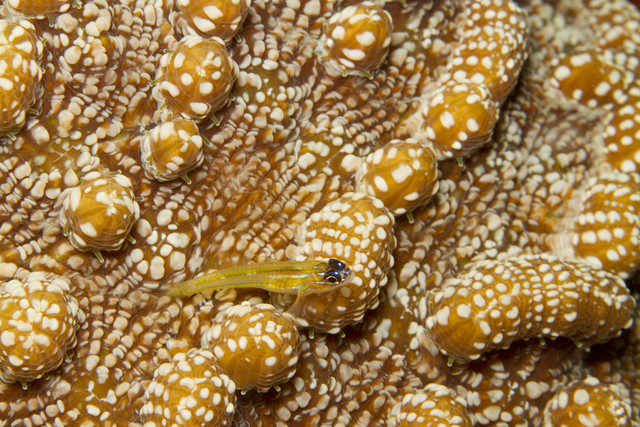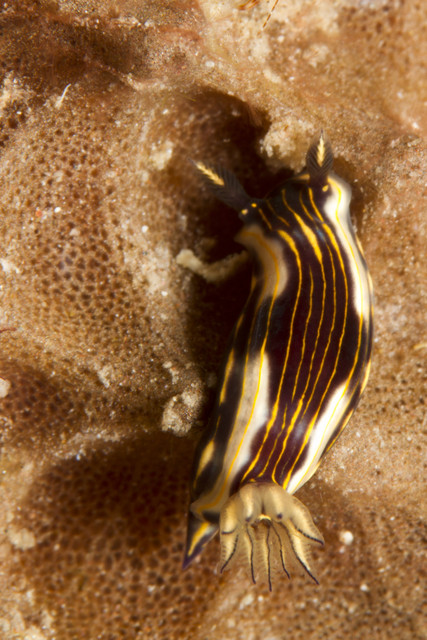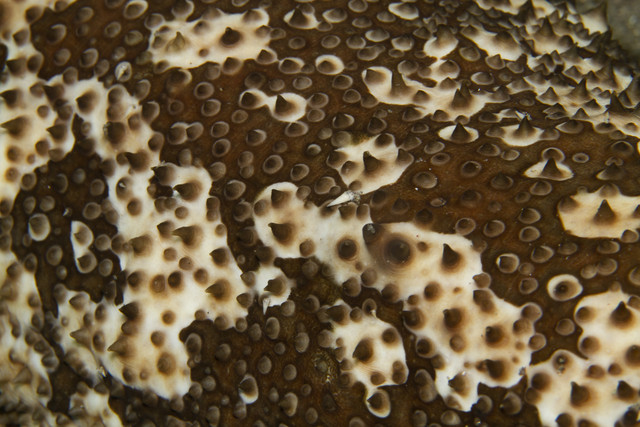flash
Super-macro Pointsetta
ktuli — Tue, 01/10/2012 - 21:42
At one point while trying out my new lens, I decided to take a series of shots with the different (albeit not all 5) magnification levels provided by the MP-E 65mm lens. In this case, I worked with the central flowering parts of a pointsetta....
Technical Data: Canon EOS 7D, Tokina AT-X M35 Pro DX AF 35mm f/2.8 Macro 1:1, 1/100 sec at f/16. Canon Speedlight 580EX II flash in auto mode and wireless control. ISO 100. RAW processing in Adobe Camera Raw. Phipps Conservatory, Pittsburgh, PA.
No - that photo is not a macro shot - I'm just providing it as a bit of reference. Some folks believe the red leaves (called bracts) are the flowering parts of the pointsetta - that's untrue. Some folks know that and believe that pointsettas simply don't have flowers - that too is untrue. What they actually have are fully male or female flowers (a single plant will have both), and they are contained in a cyathium - a flesh bulb similar to how a fig grows. So in the series below, we start with a 1:1 magnification of the cyathium cluster at the center of the plant, then move progressively to a 5:1 magnification of the (if I am getting my pointsetta anatomy correct) tops of the male flowers with the pollen.
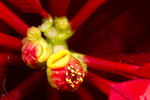 |
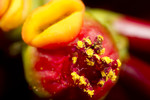 |
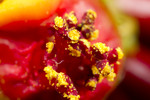 |
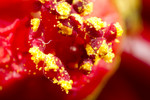 |
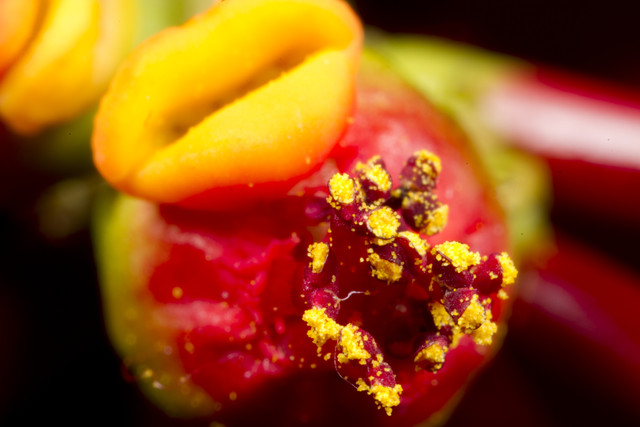 |
|||
Technical Data: Canon EOS 7D, Canon MP-E 65mm f/2.8 1-5x Macro, 1/250 sec at f/16. Canon Macro Twin Lite MT-24EX in ETTL mode. ISO 100. RAW processing in Adobe Camera Raw.
I think when dealing with this level of magnification, it is very easy to lose all sense of what it is you are looking at. Having the entire series of photos going through the magnification levels certainly helps to put things into a bit of perspective and provide some reference points to go on.
I'm really liking this new lens...
- Bill
More Grains of Pollen
ktuli — Sun, 01/08/2012 - 21:07
I really should be posting more often, but I'm still kind in lazy mode from the holidays. Today is my last day off before starting my new job (yay!), so maybe getting back to work will start getting me back into a routine and have more frequent posts again. For now, enjoy another shot of grains of pollen... this time on a hibiscus flower.
Technical Data: Canon EOS 7D, Canon MP-E 65mm f/2.8 1-5x Macro, 1/250 sec at f/16. Canon Macro Twin Lite MT-24EX in ETTL mode. ISO 100. RAW processing in Adobe Camera Raw.
I think the spiky ball shape on this pollen is pretty impressive. I may have to collect a series of flower pollen shots showcasing all of the different shapes they come in.
- Bill
Grains of Pollen
ktuli — Wed, 01/04/2012 - 08:36
I've taken some super macro photos of a pollen stamen before, but that was before I owned the Canon MP-E 65mm f/2.8 1-5x Macro lens.
This lens is a serious macro lens, and no other lens out there comes close to what it can do - which is to magnify things up to 5 times life size. Most true macro lenses will magnify up to life size (or 1:1), but the MP-E 65 can go way beyond that, allowing for magnification from life size (1:1) up to 5 times life size (5:1). I will get into more detail about that at a later date when I do a more thorough write-up of the lens, but for now that means you get to see what individual grains of pollen look like....
Technical Data: Canon EOS 7D, Canon MP-E 65mm f/2.8 1-5x Macro, 1/250 sec at f/16. Canon Macro Twin Lite MT-24EX in ETTL mode. ISO 100. RAW processing in Adobe Camera Raw.
Unfortunately, I did not record what magnification that shot was taken at, and I haven't figured out how to determine that after the fact yet. Regardless, that's still a highly magnified view of pollen - my guess is somewhere between 3-5x life size (probably closer to 5).
Stay tuned for more super macro photos...
- Bill
Caribbean Explorer: Reef Camouflage
ktuli — Mon, 12/12/2011 - 22:04
Sometimes, you have to look twice to see a fish on the reef... sometimes you have to look twice to see the fish in the photo as well.
This little guy is a Saddled Blenny (Malacoctenus triangulatus), and that camouflage is absolutely perfect for hiding this small - about two inch - fish from predators on the reef.
Technical Data: Canon EOS 7D, Canon EF 100mm f/2.8L Macro IS USM, 1/120th sec at f/16. Image Stabilization on. ISO 200. Ikelite Housing and Port with Ikelite 161 Strobe in TTL Mode. Raw conversion in Photoshop CS5.
I know it isn't quite a "Where's Waldo?" photo, but it sure is close...
- Bill
Caribbean Explorer: More Purple-Crowned Sea Goddess Nudis
ktuli — Thu, 12/08/2011 - 20:38
I've been lazy recently - both with taking photos as well as posting photos. So, here's at least a new post here.
Technical Data: Canon EOS 7D, Canon EF 100mm f/2.8L Macro IS USM, 1/120th sec at f/16. Image Stabilization on. ISO 100. Ikelite Housing and Port with Ikelite 161 Strobe in TTL Mode. Raw conversion in Photoshop CS5.
- Bill
Caribbean Explorer: Patterns of the Reef (part 4)
ktuli — Wed, 11/30/2011 - 16:40
Another in my Patterns of the Reef series. Like the second in the series, this one also features a Peppermint Goby (Coryphopterus lipernes), but this time it is sitting on what I believe is some Knobby Cactus Coral (Mycetophyllia aliciae).
Technical Data: Canon EOS 7D, Canon EF 100mm f/2.8L Macro IS USM, 1/120th sec at f/16. Image Stabilization on. ISO 100. Ikelite Housing and Port with Ikelite 161 Strobe in TTL Mode. Raw conversion in Photoshop CS5.
Like I've said, these patterns are just everywhere on the reef.
- Bill
TTV: Cris Rose Ruckus Robots (part 2)
ktuli — Tue, 11/29/2011 - 17:34
I provided a teaser for this set of photos over a month ago, ad realized I have a couple more to share, so here's another...
Technical Data: Canon EOS 7D TTV Argus Seventy-Five, Tokina AT-X M35 Pro DX AF 35mm f/2.8 Macro 1:1, 1/15 sec at f/9. Canon Speedlight 580EX II flash in auto mode and wireless control. ISO 100. RAW processing in Adobe Camera Raw.
This particular shot is a bit dark, but I really feel that the TTV treatment works well with these vintage looking robots. I know this isn't perfect, but I think it stands as and example of the potential that a little subject like this carries.
- Bill
Caribbean Explorer: Gold-Lined Sea Goddess
ktuli — Sun, 11/27/2011 - 15:40
We didn't get to see as many different species of nudibranchs as we did in Wakatobi, so this is the last species I get to share from this most recent trip.
This is a Gold-Lined Sea Goddess (Hypselodoris ruthae). They are a very small nudibranch, only growing to about half an inch in size, and were only visible at night (yeah - when the sharks were bumping into us).
They aren't the flashiest of nudibranchs, but their small size certainly made them a fun one to find on the dives.
Technical Data: Canon EOS 7D, Canon EF 100mm f/2.8L Macro IS USM, 1/120th sec at f/16. Image Stabilization on. ISO 200. Ikelite Housing and Port with Ikelite 161 Strobe in TTL Mode. Raw conversion and cropped in Photoshop CS5.
If you happened to have missed them, go check out the Purple-Crowned Sea Goddess, Lettuce Sea Slug (and more), and Long-Horn Nudibranch.
- Bill
Revisiting the Skull-Faced Jumping Spider
ktuli — Sun, 11/20/2011 - 16:58
I realized recently that I haven't posted any spider shots in a while, and that I never got back to sharing more shots of this jumping spider. So, without any further ado, here you go.
 |
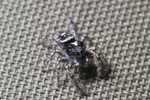 |
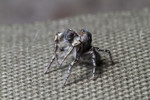 |
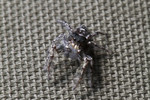 |
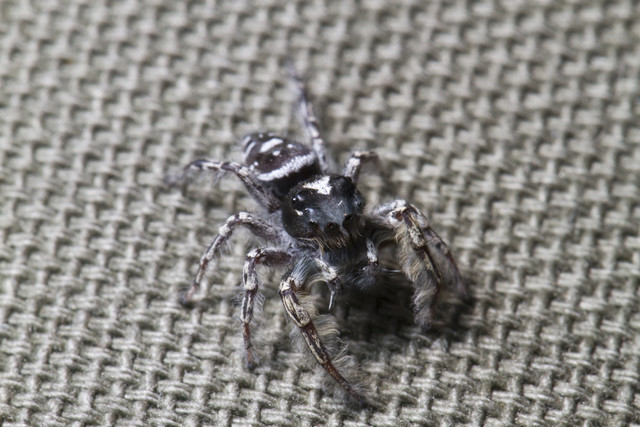 |
|||
Technical Data: Canon EOS 7D, Canon EF 100mm f/2.8L Macro IS USM (first shot with Kenko Teleplus PRO 300 "DG" AF 2x Teleconverter), 1/250 sec at f/16. Canon Speedlight 580EX II flash in auto mode and wireless control. Image Stabilization on. ISO 160. RAW processing in Adobe Camera Raw.
Such a cool little spider.
- Bill
Caribbean Explorer: Patterns of the Reef (part 3)
ktuli — Wed, 11/16/2011 - 20:40
Another installment in my Patterns of the Reef series.
Technical Data: Canon EOS 7D, Canon EF 100mm f/2.8L Macro IS USM, 1/120th sec at f/16. Image Stabilization on. ISO 100. Ikelite Housing and Port with Ikelite 161 Strobe in TTL Mode. Raw conversion in Photoshop CS5.
The subject is a close-up of a Furry Sea Cucumber (Astichopus multifidus). I have no clue where they get the furry name, but whatever works...
- Bill

